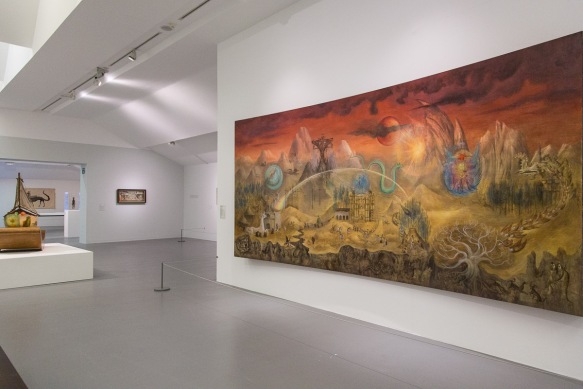
MARCH 2017 – In this anniversary year of Leonora Carrington’s birth I was thinking back on the amazing talents of this exceptional multi-talented woman; surrealist artist, writer, poet, costume designer and film-maker. Born in Lancashire in 1917, she died in Mexico City in 2011. An exceptional and extraordinary life. This article was inspired by a superb exhibition at The Tate Liverpool, dedicated to Carrington and her art, held from March to September, 2015.
Leonora Carrington – May 2015 – Continuing the theme of ‘Capable Women’ I found myself, on a beautiful spring day, walking towards Liverpool’s Albert Dock. My mind was brimming with the maritime history of Liverpool. The city’s trading heritage and the magnificence of the Port of Liverpool Building, Cunard Building and Liver Building sprawled in front of me. The sky was blue and seagulls whirled overhead. The waters of the River Mersey lapped against the Victorian walls of the docks. My destination was Tate Liverpool where an exceptional art exhibition was taking place. A collection of work by Leonora Carrington a Lancashire born artist who grew up in England, moved to Paris in the 1930s and then lived and worked in Mexico City for the remainder of her long life. She was part of the ‘Surrealist’ group of artists. She died in Mexico City in 2011 at the age of 94.
EUROPE – 1920s and 1930s
The 1920s and 30s were a revolutionary time in Europe in every sense. People were recovering from the First World War and the tremendous loss of life that had occurred. Every family in Britain lost someone – a son, brother, father, cousin in the ‘Great War’. The war changed the social order for good. In Paris a poet called Andre Breton founded a movement known as ‘Surrealism’[1]. Breton had studied neurology and psychiatry and worked in a neurological ward in a hospital during World War I. For Breton ‘Surrealism’ was a revolutionary movement examining the relationship between conscious and sub-conscious states, dreams and reality, life and death. It attracted artists like Rene Magritte, Salvador Dali, Max Ernst and Joan Miro. ‘Surrealism’ was a new philosophy that influenced every aspect of the artists lives. Breton had studied Sigmund Freud and his work on dreams. He believed that the sub-conscious mind informs every action and every thought.
In June 1936 the first International Surrealist Exhibition was held in London introducing the British public to the works of Salvador Dali, Max Ernst and Man Ray. The paintings were often illogical, human forms with heads of dogs or horses, objects placed oddly, a mixture of fantasy and reality. To a young, artistic girl with a rebellious nature the Surrealists were irresistible. Leonora Carrington had already parted company with several schools and vigorously resisted her parents attempts to introduce her to ‘polite society’. Whilst attending ‘Royal Ascot’ in 1936 she was so furious that women were unable to place their own bets that she sat in a corner reading Aldous Huxley’s ‘Eyeless in Gaza’. The book questions upper class life in the 30s, the main character is disillusioned and searching for meaning in his existence. He discovers pacifism and mysticism. Several years earlier Huxley had written ‘Brave New World’. Europe was awash with revolutionary ideas that would change our view of the world for ever. Leonora was intrigued and attracted by these ideas.
It is in this context that Leonora Carrington found herself at Art School in London. She mixed with the artists, tutors and patrons of the day. She later claimed that she fell in love with Max Ernst before she even knew him by seeing his paintings. When she did finally meet him at a dinner party the attraction was immediate. Leonora and Ernst left for Paris together. Effectively Leonora became part of the Surrealist group when she and Ernst arrived in Paris. They enjoyed a brief period together in Paris and the Ardeche before the storm clouds of the Second World War began to darken the skies of Europe. Fascism was sweeping through the continent and thousands of artists, liberals and intellectuals were fleeing. Leonora and Max Ernst were effectively separated. Many fled France for Spain or Portugal and a passage across the Atlantic to New York. The charismatic Ernst married Peggy Guggenheim, giving him a US passport and a guarantee of a safe exile in America. There is a wonderful photograph of Leonora in New York with Max Ernst, Peggy Guggenheim, Piet Mondrian and other ‘artists in exile’ taken in 1942. Leonora eventually settled in the Colonna Roma district of Mexico which was her home until her death in 2011.
Andre Breton the founder of the Surrealist movement had visited Mexico and had declared ….’’I don’t know why I came here Mexico is the most surrealist country in the world…’’ In fact Breton had gone to Mexico as part of a French government delegation to attend a conference on ‘Surrealism’ at UNAM[2] held in 1938. He met Trotsky at this time and the artists Diego Rivera and Frida Kahlo. An émigré artistic community was already well-established in Mexico. It was this community that suited Leonora Carrington so well. Here in Mexico there was Aztec and Mayan culture, Catholicism and Spanish colonialism all mixed together in a vast, steaming cauldron of exotic images. Snakes, saints, candles, life and death, dark and light. Vast brooding volcanoes, huge pyramids, mythical dragons. The young artist from England had found her ‘milieu’.
She was a multi-talented artist, writer, poet, costume designer and set designer – a veritable polymath. She wrote novels, short stories and poetry in English, French and Spanish. Ironically she is still better known in Mexico, where she is considered to be one of their finest modern artists. In 2015 the Tate Liverpool put on an exhibition, a truly exceptional selection of Leonora’s work. Drawings and sketches from the 1930s, paintings from the 40s, textiles from the 50s and even a film from the 70s where she assisted with costume and set design. The highlight of the exhibition was a huge mural commissioned by Mexico’s National Museum of Anthropology in 1964. It was the first time the enormous canvas had left Mexico.
EARLY YEARS
Leonora was born in 1917 and grew up in a dark, sprawling gothic country house in rural Lancashire. She had a vivid imagination and was sketching and drawing from a very early age. As a teenager she was drawing sinister fairy-tale characters, witches with blood-red lips and evil goblins. She persuaded her parents to allow her to study art in London and this is where she was introduced to ‘surrealism’ and to the charming and enigmatic Max Ernst.
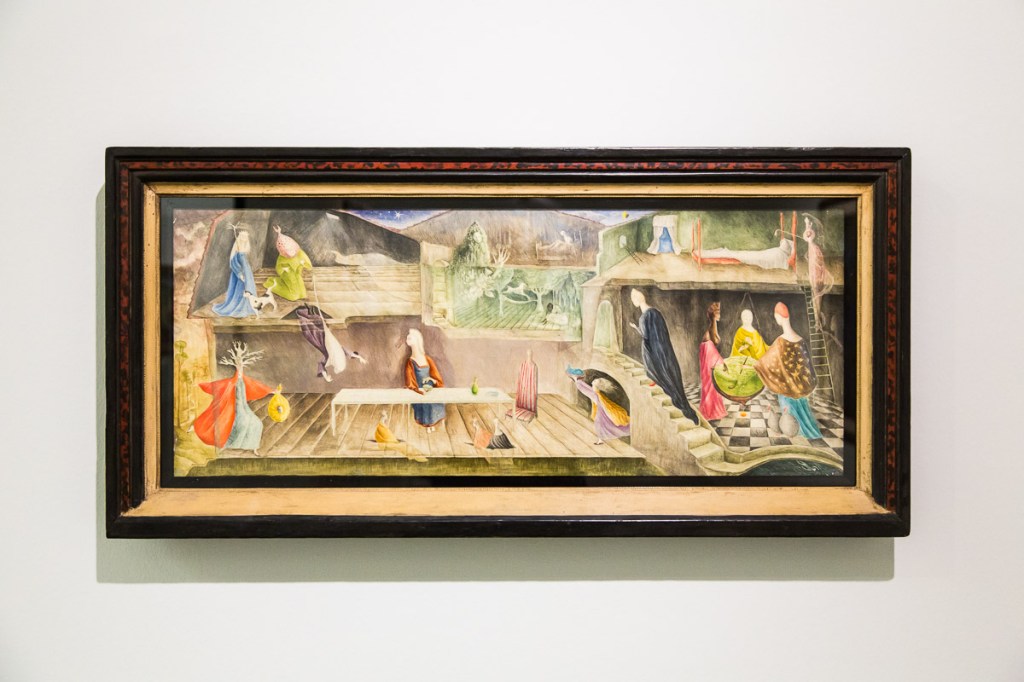

MEXICO CITY
By the 1940s Leonora was established in Mexico City, she was married to Emerico ‘Chiki’ Weisz a photo-journalist. As a Hungarian Jew, Chiki had fled across Europe on foot to escape the Nazis, he was deeply affected by his experiences. Together they had two sons. Family life and motherhood suited Leonora well[3]. She produced many paintings at this time, including ‘The House Opposite’ and ‘Old Maids’. Both paintings show female characters in domestic settings. ‘The House Opposite’ is a wonderful, whimsical work. A series of rooms in a house are linked with ladders, stairs and arched door-ways. A group of women gather around a cooking pot in the kitchen, a young girl runs from room to room delivering an urn of blue liquid. There is darkness and gloom in the attic. The painting is a delicious mixture of realism and fantasy, bright colours and brooding darkness, life and death.

About the same time Leonora painted ‘The Old Maids’ a surreal tea party, where the ladies of the neighbourhood, wearing ridiculous hats, take tea. A bird pecks at the cake and a monkey dances around the edge of the table. A young girl serves the ‘maids’ whilst an angelic creation illuminates the room – whilst drinking tea! This confectionery of images is charming and appealing. The characters draw the viewer into the painting. Another young woman can be seen hurrying out of the house in the background.

With her friend Spanish painter Remedios Varo, Leonora loved to experiment with art and food. She felt that an alchemy occured in the kitchen when food was being prepared that made her more creative. This appeals to me, I’d like to suggest that Leonora’s sense of belonging and security was strongest in the kitchen, where she felt comfortable and perhaps a sense of belonging. Often in her paintings there is a huge cooking pot, for example in ‘Green Tea (La Dame Ovale)’ painting here.

In the 1940s Leonora Carrington met Edward James, a wealthy British art collector and patron of artists. James had supported both Salvador Dali and Rene Magritte and helped to launch their careers in England. James organised Leonora’s first solo show at the Pierre Matisse gallery in New York City in 1948. Later he commissioned her to create this wool wall hanging depicting a female huntress.
The Ermine Hunt is another whimsical painting, traditional in many ways, with the huntsmen and their hounds. However the quarry, the delicate and diminutive ermine has become enormous and has developed magical gossamer. The idea that the ermine can escape the hunters is inspiring and intriguing.
In 1964 Leonora Carrington was invited to create a huge mural for the National Museum of Anthropology in Mexico City. The mural is majestic and impressive. It is called ‘The Magical World of the Maya’. The artist spent six months in Chiapas, Southern Mexico absorbing the atmosphere, colours and heritage of the region. You can see the vibrancy of the living world, bathed in a golden light and the darkness of the underworld, with it’s black, lifeless caverns and tombs. This is a perfect example of the fusion between native Indian groups living in Southern Mexico and the colonial heritage and religion of the Spanish conquistadors. The painting depicts the church in San Cristobal de las Casas with a luminous serpent curvaceously looming above it.


Leonora detested the ‘over-intellectualisation’ of her work. She believed that the interpretation of her art was in the eyes and minds of the viewer[4].After spending many hours at the exhibition over several months I was inclined to agree with her. However I was struck by the female fertility figure (above) possibly inspired by Robert Graves White Goddess. I came away with the impression that Leonora Carrington was a complicated, talented and passionate thinker and artist who found her true geographical home in Mexico. I would have loved to have met this woman and spent a few days listening to her and to her view of the world. During a working career that lasted more than seventy years Leonora painted, sculpted, wrote poetry, fiction, and designed costumes for Shakespearean productions. She was a dedicated artist; authentic, brave and adventurous.

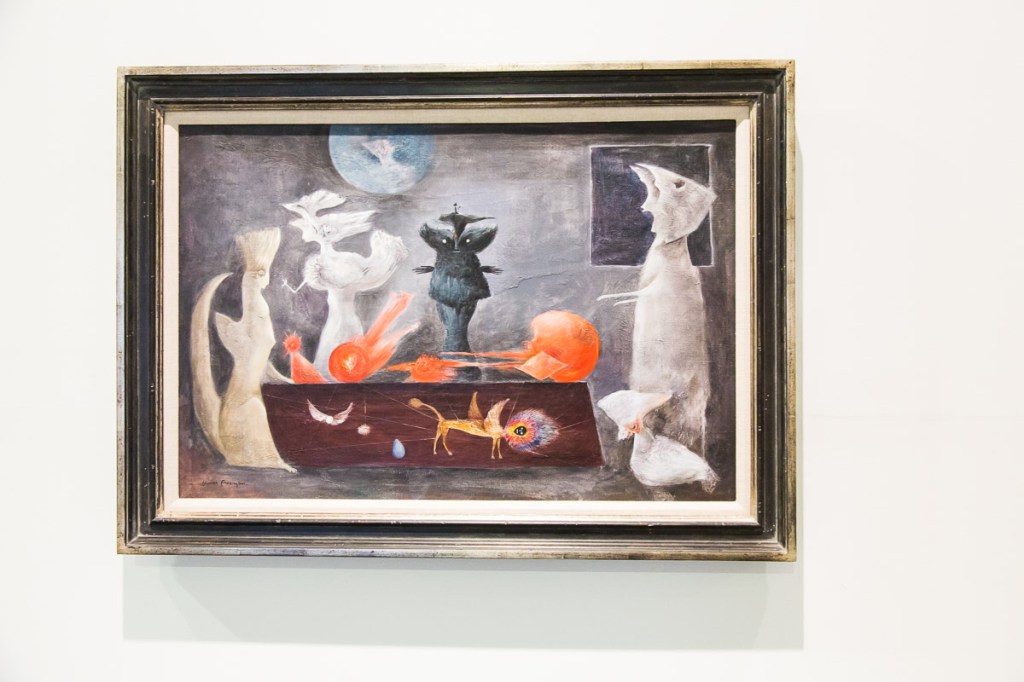
In her own words,
‘Nevertheless, I, as the whole world, yearn for an individual identity. I would like to find it because on finding it, like the truth, it changes and shifts. We only need to sleep to convert ourselves into different personalities’.
I would have liked to have met this woman. A fascinating character. A woman with humour, warmth and authenticity. With thanks to Shona Williams for recommending this great lady to the ‘Capable Women’ series [7].
Foot Notes:
[1] Surrealism was a cultural movement that began in the early 1920s, and is best known for its visual artworks and writings. The aim was to “resolve the previously contradictory conditions of dream and reality.” Artists painted unnerving, illogical scenes with photographic precision, created strange creatures from everyday objects and developed painting techniques that allowed the unconscious to express itself and/or an idea/concept. Surrealist works feature elements of surprise, unexpected juxtapositions and non sequitur. Many Surrealist artists and writers regarded their work as an expression of the philosophical movement started by Andre Breton. He was explicit in his assertion that Surrealism was, above all, a revolutionary movement.
[2] UNAM is the National Autonomous University of Mexico, based in Mexico City
[3] A thorough and interesting book on Leonora was written by Susan Aberth (2004) Title: ‘Leonora Carrington, Surrealism, Alchemy and Art’ (Lund Humphries, Publisher) -New edition edition (28 Mar. 2010) ISBN-10: 1848220561 ISBN-13: 978-1848220560
[4] Joanna Moorhead, a writer and journalist, and second cousin of Leonora Carrington wrote Carrington’s obituary on her death in 2011. It appeared in The Guardian, 26th May, 2011 Obituary – Leonora Carrington
[5] For more on Surrealism click: The Tate’s short video on surrealism this is a fantastic video made by the Tate and explains surrealism very well.
[6] In 2017 Joanna Moorhead, Journalist, writer and second cousin of Leonora Carrington published ‘The Surreal Life of Leonora Carrington’ reviews have been mixed. Virago (April 2017) ISBN-10: 0349008779 ISBN-13: 978-0349008776
[7] Other women in my ‘Capable Women’ series include:
- Kathleen Kenyon – Archaeologist at Jericho
- Freya Stark – traveller and writer: Freya Stark and Asolo, Italy
- Leonora Carrington – artist, writer, poet
- Beatrix Potter + the Lake District – sheep farmer, land-owner, writer
- The exceptional Lily Bollinger: Lily Bollinger and Champagne
FINALLY….
- Words and layout: Janet Simmonds
- Photography – brilliantly done by Peter Corcoran – thank you Pete!
- Pete Corcoran photographer
- Max Ernst’s marriage to Peggy Guggenheim didn’t last long. He met Dorothea Tanning in New York when he was curating a surrealist art exhibition featuring female artists. He included Tanning’s painting Birthday in the show (painted 1942). Her painting is a haunting self portrait showing a semi-naked Tanning in a strange lobby area with opening doors and mystical creature in the foreground. I find this painting unsettling, haunting, slightly uncomfortable. I’m not sure if they ever met – surely they must have done in New York? I imagine that she and Leonora had a lot in common – not least their choice of husband!
Dorothea Tanning lived to an impressive 101 years of age – longevity seems to run through the veins of female surrealist artists. She was recently the subject of an exhibition at Tate Modern – which I sadly missed. For an interesting summary:
Dorothea Tanning – Tate Modern, June 2019

Discussion and comment on Leonora Carrington, Max Ernst, Dorothea Tanning is welcomed.
- Updated: 14th July 2017
- Revised: 1st May 2019
- Revised: 20th July 2019
- February, 2021 / March 2021
POSTSCRIPT – June 2021 – exciting news, next year’s Biennale in Venice is being curated by Cecilia Alemani, the theme is ‘The Milk of Dreams’ words taken from a short story written by Leonora Carrington. The Biennale will run from April to November, 2022 and promises to deliver an exciting range of artists and ideas. Here’s the press release on next year’s biennale from their site: https://www.labiennale.org/en/news/biennale-arte-2022-milk-dreams-il-latte-dei-sogni
And a super little video from Mexico applauding the art of Leonora Carrington – produced on the 10th anniversary of her death by UAM – Universidad Autonoma Metropolitana www.uam.mx – May 2021
July 2021
Leonora Carrington and Venice Biennale 2022 – watch this space!
September 2021


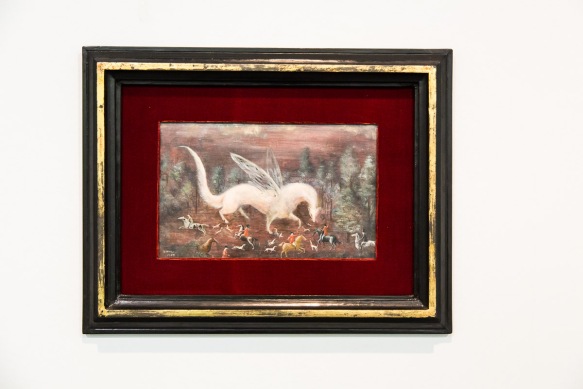





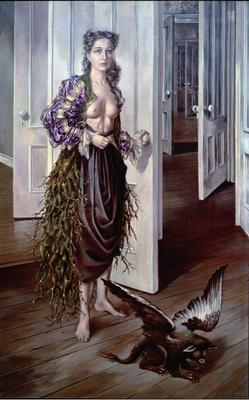


Love Lenora Carrington’s art! I had never heard of her until I traveled to Mexico City where there was an exhibition at their Museum of Modern Art. She is amazing! I prefer her paintings to Ernst’s.
LikeLiked by 1 person
Me too! She was a very original thinker and painter!
LikeLike